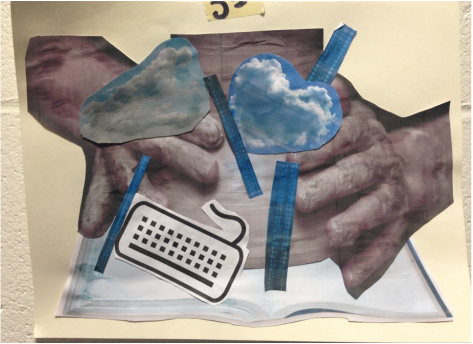 The Gift of Failure
Failure. We fear it. We do everything to avoid it, pushing ourselves to succeed. We suffer sleepless nights, struggle and strive and sometimes end up failing anyhow. We feel stupid, worthless, frustrated, and doubt our ability to make decisions. But what if failure wasn’t something to be feared? What if it could be honoured, or even celebrated?
A little less than a year ago, I wouldn’t have asked that question. I would have seen failure as failure. But now, because of my recent introduction to improv theatre, I’m embracing the idea of failure as a gift.
This semester has been a wonderful way for me to explore this concept. I’m not saying this because I am failing in any of my classes, but simply because some of the things I have been trying haven’t always been “successful” in the ways I thought they would be.
For exampleThe first example arises from , I’m taking an interdisciplinary course I am enrolled in. We’re a group of 40 students from 14 disciplines, all coming together to work on one project: a mobile learning lab for a community organization: the Yorklands Green Hub. It’s fun, but also challenging. We have weekly assignments, as well as an end goal. Our first assignment was to create a visual image of our disciplines. As a writer, I know how to manipulate words. But images? , tThat’s another matter!
.
Looking at the image above, would you have thought I studied literature? Probably not! I had unnecessarily complicated my image rather than using an image of a book with images of well- known authors. But by failing that assignment, I learned that simple is often better.
During reading week, I experienced another “failure.” I dreamed of winning the University of Guelph’s the Green Gryphon Initiative award for my proposal to use in-line hydrokinetic generators within the campus water lines on campus in order to harness the dynamic energy of water. I had spent months researching types of hydrokinetic generators, their specs, so I thought myself well-prepared when I approached the University’s physical resources manager and asked him whether he thought my vision would be feasibleto discuss feasibility. His answer was succinct: . “NNo, not now.” I chalked upmarked down another failure, but not one that will not last forever. Someday, the equipment or conditions will change, and my vision may prove feasible after all. When? I don’t know, but I’ll keep looking for that opportunity. to come..
At the same time, I experienced another roadblock. From the beginning of the course, I had been conducting research, sharing my discoveries and asking for feedback from my working group. I waited a week, a month, almost two months. No- one responded. I was afraid that our project would fail, and so would I.
Upset, anxious, and frustrated, I turned to my advisor and explained my situation. I was expecting him to tell me to suck it up and keep going. Instead, he said ““Alright. You tried. It’s not working. Let it go. Let’s get you working on something else.”
In academia, and in many institutions, failure is often hidden. In these spaces, An “success” illusion that successis framed as a straight road is created, and when failures occur, the blame is put on the individual. But the road to success is filled with failures. There are always mistakes, wrong assumptions, and false leads. Those mistakes are as much a part of the educational process as the success. In fact, they are what makes the success sweeter.
Yet people don't’ talk about their failures. They hide them, and their feelings that go along with those experiences (shame, fear, anger, frustration, etc.) so no one can see them. They’re afraid that others, when they seein seeing their mistakes, others will think less of them and their success.
What if that changed, though? What if, instead of hiding those mistakes, those wrong turns, those false leads, higher education embraced them? I don’t mean to say that the institutions should point out someone’s mistakes and put them down, but that institutions could, instead, acknowledge that, in the quest to learn, we take risks, and sometimes fail.
What if professors showed their research mistakes and what they learned from them? What if students were allowed and encouraged to take risks academically, and to try something out of their comfort zone, to change how they feel about failure?
I’d love to see more vulnerability in academia, more exposure of what actually happens on the road to success. Little is gained from sitting in the safe zone. Sometimes you have to be willing to fail in the short game in order to succeed in the long game.
I have a confession to make: I’ve never been a big fan of the Oscars. I’ve never been fascinated with the dresses, the glamour, the incessant talk about who is nominated and who isn’t. When co-workers or students start talking about the Academy Awards, I can normally be found running the other way. Yet George Clooney’s recent comment that there aren’t “enough quality roles for black” actors and actresses made me jump into this years’ #OscarsSoWhite conversation. This statement is loaded with assumptions that need to be challenged. What, for example, constitutes a “quality role?” Does it differ for a person of colour than it does for a white person? How? It’s complicated. It’s not enough to say that the Academy is at fault for not nominating people of colour to receive awards. We need to explore how the problem is played out on different levels of the studio/audience/Academy relationships. Let’s start at the studio level and work our way to the viewer. Studios create movies based on scripts (stories) that a director finds and decides (with the support of the studio) to develop. That director has a vision and shares it with their team. The producer helps to give form to that vision, and with the help of casting, as well as a myriad number of other components of the studio, the movie is filmed, edited, and released to the viewing public. As part of their plan to produce their movie, the studio makes some assumptions about their potential viewer – and this is where the public comes into the dynamic. Studios assume that the person who has the disposable income and the time to go watch a movie in theatres is white. This same assumption not only pre-disposes the types of stories being told, but also who plays the roles within the film. It is then the studio’s job is to produce movies and choose stories that will appeal to their assumed (white) viewer and the hero/protagonist that they can identify with. Unfortunately, white people have a hero complex. They want to see stories where they are seen as the saviours, the helpers, the ones who do right. They don’t want to see stories that portray white people as being corrupt, cruel, or evil. Because of this, studios typically cast the hero(ine) as white. This isn’t necessarily because the white actor/actress is the best person for the role, but because that is what the audience would want and expect. The white audience assumption poses a problem for people of colour because it limits what roles they can get. People of colour are often stuck playing the same types of roles over and over again. Idris Elba (from the film Creed) recently stated that he can only play so many “best friends or gangstas.” Artists of any colour at all end up being type-casted into specific roles which support white-normative narrative: the Asian computer geek, the Arabic terrorist, the First Nations historical Indian, etc. I know you understand what I’m saying. The next problem with white viewer assumption is the presumption that there is no difference between white movies and black movies. There shouldn’t be any difference. Yet there is. Small studios produce black movies which feature a story with predominantly black characters driving the action/plot and resolution in everyday situations, with a black viewership in mind. Unfortunately, these movies aren’t blockbusters. They don’t receive critical acclaim, or make a lot of money. Most white people would never know they exist, much less watch them (think Six degrees of Separation, or The Pursuit of Happyness). Large studios, on the other hand, stick to narratives that keep problematic black people and problematic black issues firmly in the past. Black actors/actresses get stuck in narratives of slavery and oppression ( Amistad, Roots, 12 Years a Slave, Django Unchained), often with white “helpers or saviours.” If these studios want to make money from black issue films, they need to select screenplays which tell stories that their viewers want to watch, with actors/actresses they want to see, lest they risk financial loss because they upset their white viewer. You don’t have to look far to see what happens when black performers “dare” to challenge white narrative. Just look at the vitriolic response that came from Beyoncé’s Superbowl halftime performance a few weeks ago because she dressed her backup dancers in outfits reminiscent of the Black Panther movement of the 1970’s. Static poses and dance moves made white viewers feel anxious that Beyoncé was supporting Malcolm X’s statement that black people should combat violence against blacks using “any means necessary.” It challenged the status-quo, which made white viewers feel uncomfortable. George Clooney’s statement about the lack of quality roles for black artists, then, is troublesome. The reason there aren’t “quality roles” for black artists isn’t that there aren’t sufficiently-talented black artists, but that black artists weren’t selected for high-profile roles regardless of colour. In addition to the complexity of the studio/viewer relationship, there is the inherent elitism which exists within the Academy. In order to become a part of the Academy, artists must first have been nominated to receive an award at least twice in the last ten years in their specific field. Once accepted as a member of the Academy, they can nominate a limited number of other artists in the field in which they were nominated in the following years. This means that actors can’t nominate producers, only other producers can. This results in an discipline-specific elite, and a predisposition and constant jockeying for the same people to keep their place in the inner circle. The Academy is not without bias. It is predominantly a group of white men. Sure, there are a few women who have made it to the upper echelon as producers and directors, but they are few. There are even fewer people of colour. The issue of getting people colour into the inner circle is problematic. It’s not simply a matter of elitism within the organization. It is also shaped by the culture in which we find ourselves. Right now, the American people are troubled with finding black narratives that aren’t violent or confrontational. Animosity between whites and blacks is taking place in the stages of our cities. It is being played out between law enforcement and citizens. It’s being acted out on television news, and even in social media. Our art forms are not exempt from being affected by this animosity among the many peoples in our countries. Is that tension likely to go away simply if we suddenly have black artists being nominated for an Academy Award? No. It’s not. It’s simplistic to believe that we’ll stop inter-racial conflict if black artists are nominated for an Oscar. That tension has been present for a long time, and will likely continue longer still. This is why I don’t care about the Oscars or any other awards show: because I’ve seen plenty of amazing performances by artists of different colours that could have, and perhaps should have, won Awards. Yet, they didn’t. Does that detract from my experience of fabulous movies, incredible performances, and stunning visual effects? It doesn’t. It simply means that I will continue to use my own standards to judge whether a piece has merit to me, or not. Perhaps you should do the same, and not let a small elite group tell you what you need to watch, read, or listen to.
This semester, I'm taking a course that is a bit different here on campus. Rather than simply being limited to dealing with topics within just my realm of study (English literature), I'm in an interdisciplinary course. That means that I'm taking a course that requires me to assimilate information from a variety of disciplines (computers, food science, nutrition, engineering, to name a few) and incorporate their knowledge in the work that I'm doing. Sound challenging? It is! As part of the first class of our course, we were asked to examine what we thought the terms "knowledge translation" and "knowledge transfer" might mean. I decided to take the writer's approach to the question. Knowledge translation requires three things: - Knowing your own cultural language. A cultural language can be anything from a specific language that your family or friends or community speaks, to a language of technical terms that people in your profession know and understand. It can be as specific or broad as your own experience and cultural background or being part of a classroom dedicated to a particular topic.
- Knowing the what language(s) the people you want to communicate with use,
- Finding ways to bridge the language gap where words and ideas don’t easily mesh, sometimes through the co-creation of new words (like thingy, for example).
The problem is this: most people only speak the language of their own culture or society. Not only don’t they necessarily understand the language of other cultures, they can’t be bothered to try. There is a form of elitism, and a deliberate use of technical language as a way to control who gets to know what. This is how knowledge societies support themselves, through the sharing of knowledge to others in their small group. This can be beneficial to society as a whole when it preserves knowledge that might have been lost (such as in the reclamation and rediscovery of knowledge in indigenous groups), but it becomes harmful when knowledge never leaves the group to impact or support society as a whole. This form of elitism and exclusion is common, especially in universities and colleges, not only on the undergraduate level, but especially at the Masters’ and Ph.D. levels. People go to school, and are told to specialize in one specific discipline, in which they learn the specific language of their discipline. This is useful so that they can speak to others in their field, and to do their work. When their work is done, and their paper is published, others in the discipline are able to read it and use it to support their own research. Unfortunately, sometimes the people who could most benefit from the results of research are unable to read that paper. Why? It’s not just because they don’t have access to the academic/scientific journals, but also because these papers are written in a language that is inaccessible. The knowledge of that research is contained in the Ivory Tower of academia. It doesn’t leave. It isn’t shared with the average person, or even with people who we think SHOULD know. The average person doesn’t necessarily have the education, or more specifically, the same cultural language that helps them understand what the paper says. This is frustrating, especially when new research can point to new ways of doing things that are beneficial for everyone, not just a choice few. The biggest barrier to understanding and sharing (transferring) knowledge is the use of jargon. Jargon is the specific language of a topic/subject, and is often very technical in nature. Used in your small group, where everyone understands the terminology, it’s perfectly okay to use it. However, using jargon in a larger group to obscure information or to confuse or intimidate the less knowledgeable excludes others from the conversation, and keeps the dialogue only among “those in the know.” In my opinion, when specific language is used to exclude others, JARGON IS JUNK. With that in mind, I’m going to explain what my purpose is in the context of this interdisciplinary course and why my discipline (English) is beneficial to everyone. You see, I’m a writer, author, and editor. For more than ten years, I’ve been working as a freelance writer for children’s and parenting magazines. I have had a novel published by a small press, self-published a short non-fiction e-book about mason bees and was recently published in a collection of short stories about the experience of geocaching. In addition to this, I have helped more than thirty authors write their books (and even ghostwritten a number of them for them). I’m more than just an “aspiring author,” I am a successful professional writer, a member of the Canadian Society of Children’s Authors, Illustrators and Performers, a book coach, and the Editor in Chief of an e-zine for cosplay enthusiasts. While many people think that writers just string words together to tell stories, we also string words together to help people communicate ideas to each other. We use our words with purpose, knowing who our audience will be. It would be crazy for me to use the same language that I use for a toddler learning their first words (dog, girl, sun, etc.) for an academic paper on the social aspects of memory, for example. That just doesn’t make sense. As writers, our words must meet the reader, where they are. If we don’t use the right words, if we don’t speak to them, at their reading level or level of comprehension, they’re not going to understand our idea. There will be a breakdown in our communication. Considering that the purpose of writing something is to communicate, it would be counterproductive not to use words that clarify concepts rather than obscure them. Some people (especially experts and academics) call this process of translating technical language to the lay person “dumbing it down.” As a professional writer, I never think of it that way. I simply think “How can I explain this in terminology that this intended reader/user will understand?” I am always in the process of interpreting the words of one individual or group, and translating it so that another individual or group can absorb those concepts into their understanding. That’s where knowledge transfer occurs; when the intended reader/user is able to look at the material that is being shared and say “I understand!” We can only be said to successfully transfer the knowledge of the one into the other when that other has grasped our concept and can explain it to themselves, us, and others in their own language. At least, that’s been my personal experience so far. In summary, “knowledge translation” and “knowledge transfer” are just two more technical terms that can obscure the simple concept of using the language of your intended reader/user so that they can understand and apply your concept.
A little while ago, our family decided to attend a free class to learn the basics of improvisation. We thought it would be just fun and games and having to perform, but it wasn’t what we imagined. It was, in fact, much better! Last week, we were individually challenged to silently act out an everyday activity using first four, then ten, and then twenty moves. My daughter and husband took their turns early on, with hilarious results as they tried to brush their teeth and feed the cats. When it was my turn, I was asked to paint a wall. With just four moves, I was able to put the paint can down, open it, and pick up the paint brush. With ten moves to use, I rolled out a drop cloth, then placed and opened the paint can. Next, I picked up the paint brush and began my first stroke of paint on the wall. When I attempted the same task with 20 moves, something happened. Suddenly, I developed a character – I was able to show how I felt about having to paint the wall. It was a nuisance. I moved as if this was a BIG chore. I threw the drop cloth down. I could almost hear the paint can as I let it fall to the floor. I pried the can open, put my tray down, and began to pour the paint in. That was when I slipped, and poured paint on the floor instead of in the tray. Frustrated, I dropped the paint can, which spilled more paint, which I got on my hands. ARGH! I threw my hands in the air, then onto my head. I tried wiping my hands on my pants, then, noticing the hand prints there, I proceeded to wipe them on my shirt as well. I looked at myself, sighed heavily, then picked up the paint roller and calmly started to paint the wall. As you can see, simply writing about the process of 4/10/20 perfectly illustrates the difference in terms of what you can accomplish and share with your reader, depending on the length of your sentences or the complexity of your process. It doesn’t matter if you’re writing fiction or non-fiction, an article, short story or novel. There are times, in your writing, to use only four steps. There are also times to use twenty steps. The trick is learning when to use which technique for your reader. Which one will serve your reader best for what you are writing? If you’re interested in learning more about writing, and want support writing your book, you can reach me at intuitivebookcoach@gmail.com and www.strongwordswriting.com
A few weeks ago, I was one of a dozen speakers at the local Ignite Guelph event. I shared the stage with some amazing local speakers.
Some were new to speaking to a crowd.
Others were comfortable on stage.
A few sounded like pros.
Our speeches, just like each of us, were different.
Some were serious.
Some were thought-provoking.
Others were funny and off-beat.
The topics of our speeches varied:
One spoke about life as being the ultimate expression of improvisation.
Another spoke about the structures of trust.
One spoke about the importance of the sense of touch.
Yet another spoke about riding motorcycles,
another about geocaching,
and me - well, I spoke about sharing story.
The important thing that happened that night is that we were all speaking about something that we are passionate about. That's what Ignite! events are all about.
I had a great time, and look forward to participating at the next Ignite Guelph event in spring!
Jordan paused, his hand on the door, and looked at the sign.
“La Chocolaterie Store and Café
Closed for Private function
April 15 – 10 am to noon.”
He stepped through the door, a hesitant smile on his face. He walked to the table by the window, set especially for him and Charlene, and sat down. He pulled his balance book from his left breast pocket, and glanced at the spreadsheet of his life.
Graduate top of class. Check.
Senior partner. Check.
Learn to fly. Check.
Find key to Charlene’s heart. That line was blank. No checkmark because, no matter how many times he’d tried, he just hadn’t succeeded. Yet. He hoped today would be different. That today he would finally unlock her heart and that she would accept his proposal of marriage.
He placed the book face-down on the table, removed his slim frame glasses and pinched his nose. His steel blue eyes watched the window as he tapped his silver mechanical pencil against the table.
“She’ll come,” Shannon the waitress said. “She always comes.”
“But she always leaves,” he sighed. “If she leaves this time, I’m afraid that I’ll never figure her out.” He tapped his balance book. “Nothing adds up without her.”
The waitress nodded, she’d heard his love story before. She knew how they’d met at this same table long before she started here. He’d come in for his usual. Charlene was drinking Mexican Mocha while trying to finish her taxes before midnight.
“I didn’t have a chance. From the moment I met her, my life has been out of balance. If only I could find the key to her heart.”
“I wish my Hank was half as romantic as you are. I’d be glad to have you romance me.”
Jordan glanced at the clock. “10:55. She’ll be here any minute. Can you prepare our coffees, please,” he asked.
Just then Charlene flounced into the café. She was wearing her flowing fuchsia dress, with her favorite floral scarf and summer hat. She made a beeline to Jordan, smiled and gave him a kiss. “Sorry to keep you waiting, I’m so glad you remember our anniversary.”
“I could never forget,” he said genuinely.
He rose, and held her chair for her to sit. Charlene floated into it, and settled like the foam on her favorite drink.
“One black double espresso, triple sugar, with a touch of cocoa for you,” the waitress said, placing a tiny cup in front of Jordan. “And one Mexican Mocha for you. I’ll bring your dessert momentarily.”
They sipped their coffees, and smiled at each other.
“Have you found the key to my heart?”
“I hope so,” Jordan muttered. “It’s not like the first time, when I tried to give you flowers.”
“Those chocolate flowers were beautiful, Jordan, but you should have known then that I wasn’t a delicate flower,” she smiled.
“I know better than to give you a ring.”
“You mean that rock that you brought back from Canada?” she teased.
“I will have you know that I thought long and hard about that. No conflict diamond you said. So I chartered a plane to a diamond mine in northern Canada, mined a diamond, cut it and mounted it into this beautiful setting.” He held it out and placed it on the table.
“Most girls would be happy to have a ring like that.”
“Well, I’m not most girls,” Charlene reminded him.
“Thankfully,” Jordan quipped. His eyes crinkled as he smiled. “Do you remember the year that I filled my hot tub with dark chocolate?”
Charlene leaned forward and smiled wickedly. “Yes, you spent all night trying to tease the key to my heart from me.”
Jordan smiled, “I smelled chocolate for weeks. I thought for sure I had your heart then, but figured it would take something bigger to win your heart in the end.”
Charlene giggled, “Whatever happened to that life-size chocolate TARDIS you had made for me? It really WAS bigger on the inside, you know.”
Jordan nodded. “I know. David Tennant helped to auction off pieces it to benefit Mothers of Area 51 Refugees.”
The waitress appeared with two plates. She placed the one with a small chocolate key beside Jordan, and the other, with a square chocolate box, in front of Charlene.
“Not another box, Jordan.” Charlene’s voice seeped disappointment.
Jordan pushed the key across the table to her.
“Open it, Charlene. I have to know if I’ve finally unlocked the key to your heart.” He held his breath and it was as if the world held its breath with him.
She picked up the key, and placed it into the lock of the chocolate box. She turned it, and opened the box, as if afraid to see what was inside.
Jordan watched as her expression went from fear to surprise to shock. She slowly reached inside.
“Fried chicken,” she said in a reverent whisper. “You got me fried chicken.”
Charlene picked up a piece, and raised it to her nose. “Sweet ambrosia,” she whispered. She bit into it; her eyes flew open in surprise. She groaned in ecstasy.
“Oh, Jordan!” she cried. “You’ve done it. You’ve found the key to my heart!”
Jordan went on bent knee, and brought forward the ring he had tried, so many years ago, to give her. “Say you’ll marry me, Charlene!”
“Yes, Jordan, I WILL marry you,” she answered, slipping the ring on her finger.
“Then let’s go now, the minister is waiting, and I can’t wait another moment to call you my wife.”
Jordan picked up his ledger, and, checking the last line, closed the book. Hand in hand, they moved to the door.
Shannon held the door for them as they left. Removing the private function sign, she shook her head and sighed. “Hard to believe, all this time, it was fried chicken.”
This story was entered in the second round of the NYC Midnight Flash Fiction Challenge in October 2014. Results of this are pending.
“The only way off this island is as a Marine.”
As I first set foot on Parris Island, and followed the yellow footprints to my first day of marine training, I didn’t know just how true those words would be.
I was as taut as the American flag that snapped in the brisk breeze, primed and ready to prove my metal on this hunk of rock. Lined up with my cohort on the tarmac, I can still remember thinking that I would be the one to walk off the island in my Dress Blues in three months’ time.
Every day Drill Instructor Jones goaded us in our exercises. I crawled through so much dirt, sweat blood and my muscles ached every day and every night. Through driving rain, in stifling heat, in bone-crunching jumps, I endured. Not everyone made it … we lost Stephens to a psych assessment, Parker to an automatic “misfire” and Turner to a desertion.
I was a dedicated, motivated, lean, mean, fighting machine, hungry for action with an Expert Rifle status. OORAH!
But right now, just like then, I was hungry for something else. The smoky scent of burgers being cooked on the outdoor grill wafted on the breeze, down the parade square and to my quarters. It was like hitting the jackpot at the rez casino – we had Leave day and Independence Day all rolled into one. I wished that mom was here, making me Indian tacos on her award-winning frybread. Best in Montana, they said. But she was on the rez, and my military family was all busy with family of their own. Laughing, talking and eating together.
I piled my plate with a few burgers, potato salad, some more potato salad and apple pie, and went back to barracks. As the families left, the platoon returned, smiling and happy. But the second that Drill Instructor Jones stepped in the room, we all snapped to attention and stood at the end of our bunks.
“I know you pansies had your family reunion today, but it’s come to my attention that Platoon 3 thinks that they can whoop your ass.” He whipped around and singled out Harris, as always . “The enemy takes no holidays, when you’re weak, they will strike. Move out!”
I scrambled into my gear, grabbed my helmet and my M-16 A-2, and hit the tarmac running, with Harris right behind me. We climbed into the cattle car. It took off, and we bounced in the back of the transport shoulder to shoulder, holding our rifles .On the way, DI Jones explained our mission.
“When we arrive, fan out and scan the perimeter. The enemy is over the ridge. In order to succeed at your mission, you’ll need to take out the tower and signal with a flare. “
The transport came to a stop, we tumbled out like tumbleweeds, and took cover. DI Jones was right behind me and Harris, signaling commands. We started out, crawling through the mud, under barbed wire, holding our rifles clear of the muck. Making it through, we came to a tree line. Using the shelter of the trees, the DI quickly issued new commands.
“Okay Chief,” he pointed to me, “show us what you can do. Track these bastards and take them out. Harris, you’re on point. Move!”
Harris sat, silently, hugging his rifle.
“I said move, Harris!” Jones barked.
Harris didn’t.
“You pansy-ass mother fucking idiot. Move your fucking ass!”
For the first time I could remember, Harris moved. The next thing I saw was his rifle, pointed directly at the DI.
Fireworks start going off in the direction of the camp. The bright explosions lit up the sky, red, white and blue, and strains of the Star Spangled Banner filtered through the trees.
“Take that you black fucker! ”
I dove in front of Jones. I felt bullets whiz by my ear, through my hair and heard them hit a solid target. It didn’t sound like wood. Something punched my chest . I put my free hand to my chest – and pulled it away – stained with someone’s blood. Behind me, blood spurted from the DI’s shoulder.
“You bastard!” I yelled, staggering and falling. The world went black as the last fireworks faded in the sky.
They found our bodies in the morning, bloody and broken. They called it a training accident. My mom got flown in for the funeral ceremony. I watched as they folded the flag and gave it to her to carry home. I tried to leave with her, but I can’t. I’m stuck here.
It’s the 4th of July again. The outdoor grills line the sides of the parade square as families and recruits celebrate Independence together. The recruits are enjoying a day of celebration, not knowing that, come nightfall, Drill Instructor Jackson will be waking them up for night maneuvers, just like the ones that cost me my life.
“The only way off this island is as a Marine.” That’s what Drill Instructor Jones said when we landed here at Parris Island. He had no idea how right he was. The dead outnumber the living here, our ghosts walking side by side, going through maneuvers with the other failed recruits for the rest of time. We march every day with our living brothers in arms.
Oh look, they’re lining up for dinner. Chow time. I sure am hungry… for home.
This story was entered in the NYC Midnight Flash Fiction Challenge in August 2014. It placed seventh in our group (and I'm proud of that).
 Used with permission, photo by digitalart Used with permission, photo by digitalart As a child, I read all the time. The books I read were typical of the time I grew up in. Because I didn't start reading in English until I was seven, I missed out on many of the books that my peers considered "classics." Books like Winnie the Pooh and poems by Shel Silverstein were not part of my early literary experience. By the time that I was nine years old, I started reading books like The Borrowers and Nancy Drew or Hardy Boy adventures. Then, when I got to my early teens, I found that I had nothing to read. The books for children were too childish. Teachers made me read books like The Chrysalids, As I Lay Dying and 1984. While those were okay to read in the classroom and made for interesting discussion, they sure didn't make for entertaining reading for an inquisitive, adventurous young woman like me. The books I had available to me were not filled with strong female main characters. The books for adults were too boring, and had way too many pages with long drawn out monologues that made me want to tear the books into shreds. Who wanted to read mysteries about some pompous detective called Hercule Poirot? What did I care for John Updike? I didn't. I wanted to read books that reflected my reality. I wanted to see myself in the main characters. I longed to read about a heroine that was like me. More than thirty years have passed since my teen years; and in those years, children's literature has changed a great deal. Nowadays, while books with strong male characters still abound, there are just as many (if not more) stories about girls who are changing the world. There are stories about having gay parents, about being weird, and about placing a well in Africa - and those are just the picture books! My daughter is now eleven, and, just like I did when I was her age, she eats books for breakfast, lunch and dinner. So when I heard that The Bookshelf (our local independent bookstore) was in need of book reviewers for children's and young adult books, I put our name into the hat and crossed my fingers. A few days later, I received an email - we were in the reviewer's club! Today, I selected a long list of books that my daughter and I can't wait to read. If I can pick them up tomorrow, I should be able to do my first review by the weekend.
As it turns out, my first class presentation occurred back in 2010, shortly after my The Olympic Torch Relay By the Numbers was published in the January 2010 edition of Kayak magazine (a Canadian History Magazine for children).
The presentation was for my daughter's grade two class, a bunch of rambunctious boys and girls who were more eager to participate in Olympic sports than talk about them.
In the course of my presentation, I not only talked about the Olympic Torch Relay and the 2010 Olympics, I managed to tie in some math skills when we talked about how many people had carried the modern Olympic flame since it began oh so many years ago. The children were especially excited to talk about their favorite sports, and also to learn about the process of being published in the magazine.
Over the years, I have had the pleasure of doing several different presentations for elementary school students. I'll be sharing more of those in future blog posts.

Our dog, Fudge, whose antics amuse me every day.
For a long time, our family had two dogs. So I know all about the joys of having a dog, as well as just what kind of trouble they can get into. This story was inspired by our first dog, Snap. She's was a Westipoo. Back in February 2006, the editor of Kayak magazine so liked a short story I sent him as a sample of my writing that he asked me to write a story with a similar feel but "reset it to the settlement period in the plains of Canada ... and oh, it has to include the Northwest Mounted Police. And ... ummm.. .could you please do that in two weeks?" I jumped at the opportunity to do something on a deadline. So I buckled down and read up on the NWMP, their role and, of course, the people who came to settle the prairies of Canada. I researched names, types of rifles as well as a few important details. Okay, I missed some (as a fellow writer FROM the prairies later told me). But I did my best given my timeline. Here is the link to my story, Tail Waggin' Trouble. See if you can find the historical inaccuracy.
|

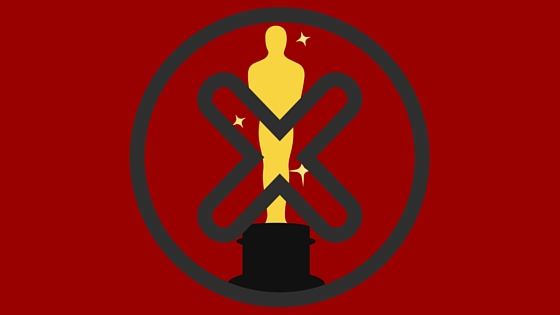
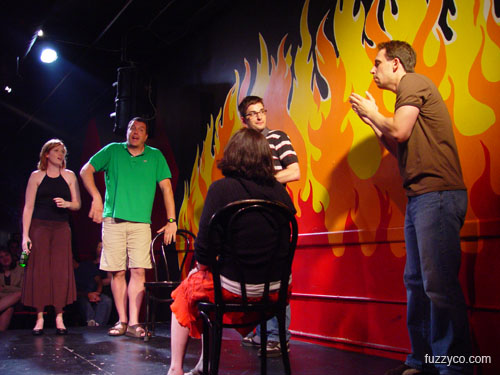
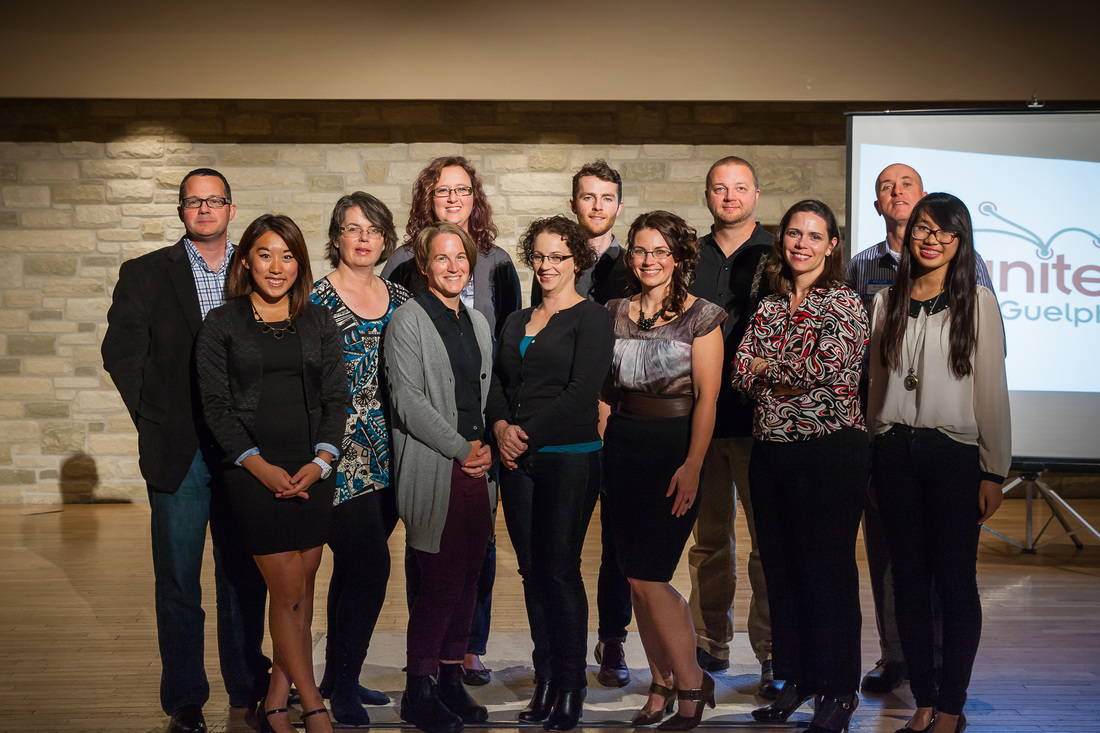
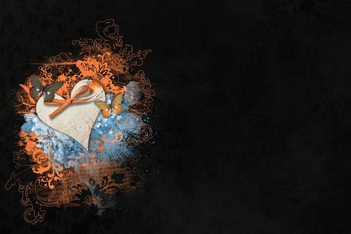



 RSS Feed
RSS Feed